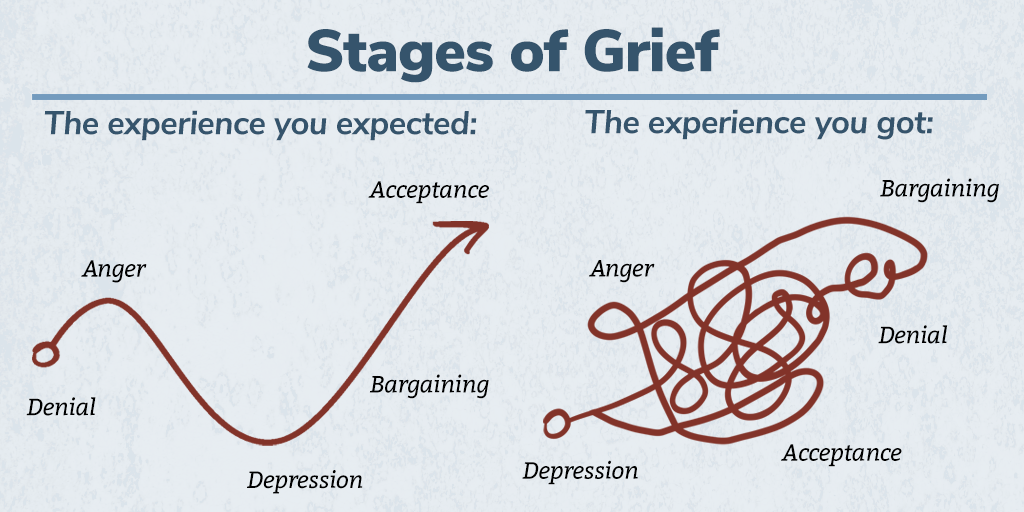The Five Stages of Grief, also known as the Kübler-Ross model, were first introduced by Elisabeth Kübler-Ross in her 1969 book “On Death and Dying.” This model was originally developed to understand the emotional responses of people who are terminally ill, but it has since been widely adopted to understand the process of grief more generally. The stages are not meant to be a complete or linear process, as individuals may experience these emotions in different orders or revisit some stages multiple times.
- Denial:
- In this initial stage, individuals may refuse to acknowledge the reality of their loss.
- Denial is a defense mechanism that buffers the immediate shock, allowing one to process their pain at their own pace.
- People in this stage might act as if nothing has changed or refuse to accept the truth.
- Anger:
- As the masking effects of denial start to fade, the pain re-emerges.
- The individual may feel frustrated and helpless, which often turns into anger.
- This anger might be directed towards other people, themselves, the deceased, or the world in general.
- It can be expressed as bitterness, irritability, or resentment.
- Bargaining:
- At this stage, individuals might dwell on what could have been done to prevent the loss.
- They may engage in “if only” or “what if” thoughts, often focusing on different actions or behaviors they believe could have altered the outcome.
- Bargaining is a way of trying to regain control and cope with feelings of helplessness.
- Depression:
- This stage involves the realization of the true extent of the loss, which often results in feelings of sadness, despair, and hopelessness.
- Individuals may experience a lack of energy, changes in sleeping or eating patterns, and withdrawal from activities and relationships.
- Depression in the context of grief is a natural and appropriate response, not necessarily a sign of mental illness.
- Acceptance:
- The final stage is acceptance, where individuals come to terms with the reality of their loss.
- Acceptance does not mean they are okay with what happened, but rather that they acknowledge and accept the reality of their situation.
- In this stage, people start to adjust and find ways to move forward.
It’s important to recognize that the Five Stages of Grief are not a rigid framework. People grieve in their own unique way, and not everyone will go through all the stages. Some may skip stages entirely, while others may experience new stages not defined in the model. The concept of these stages provides a framework for understanding grief, but it should not be used to prescribe how people should experience their grief. The process is deeply personal and varies greatly from one person to another.

